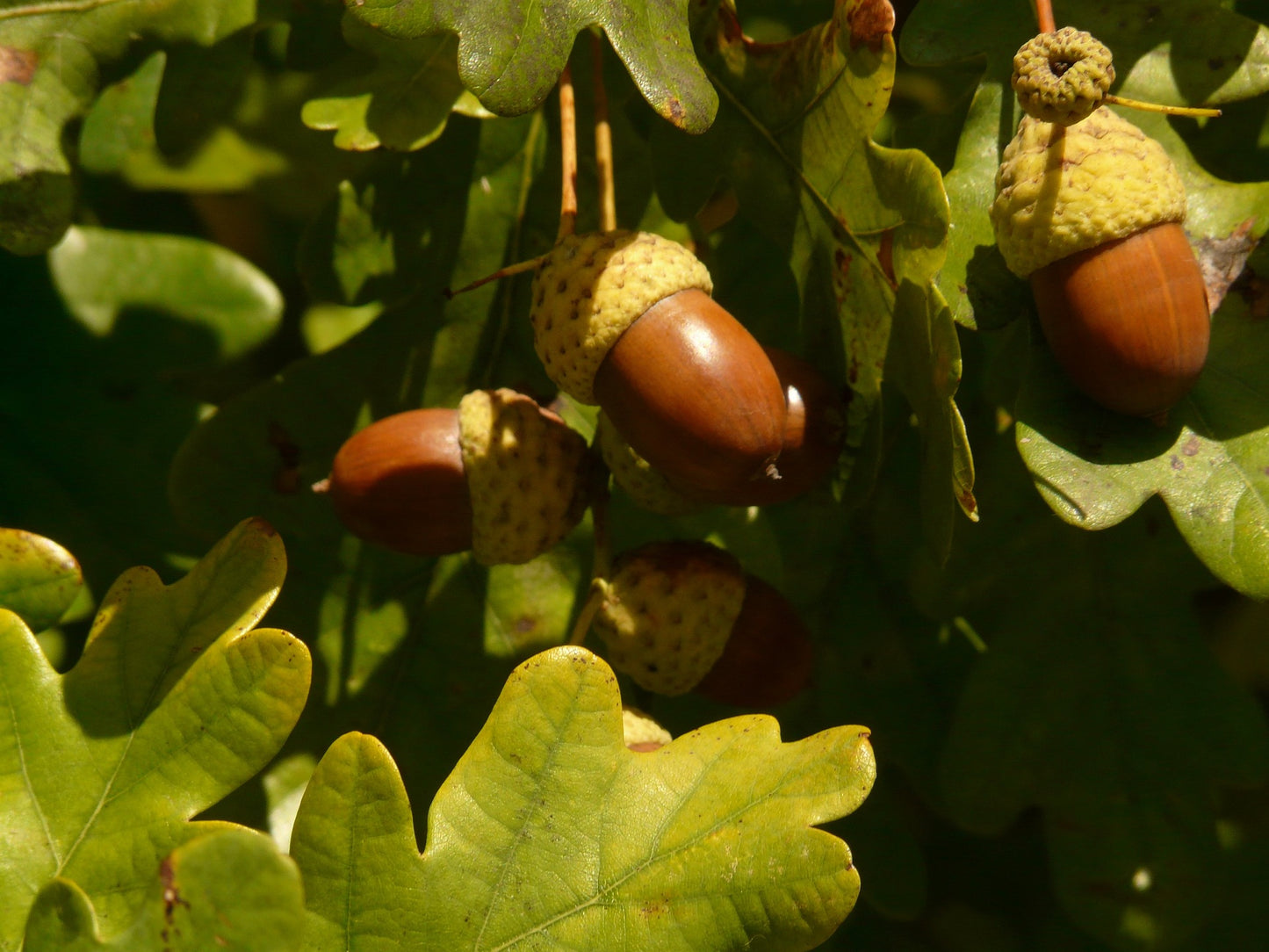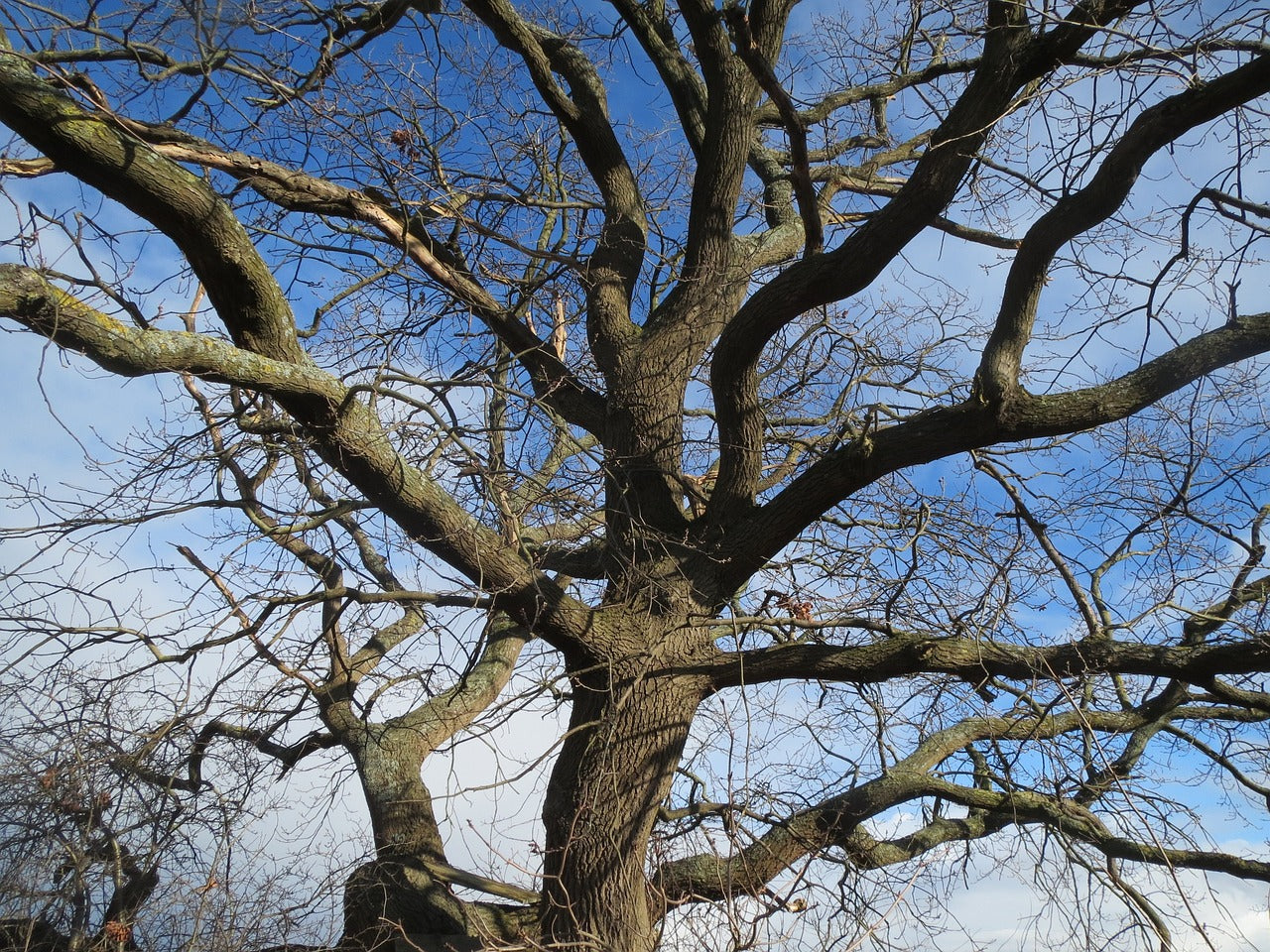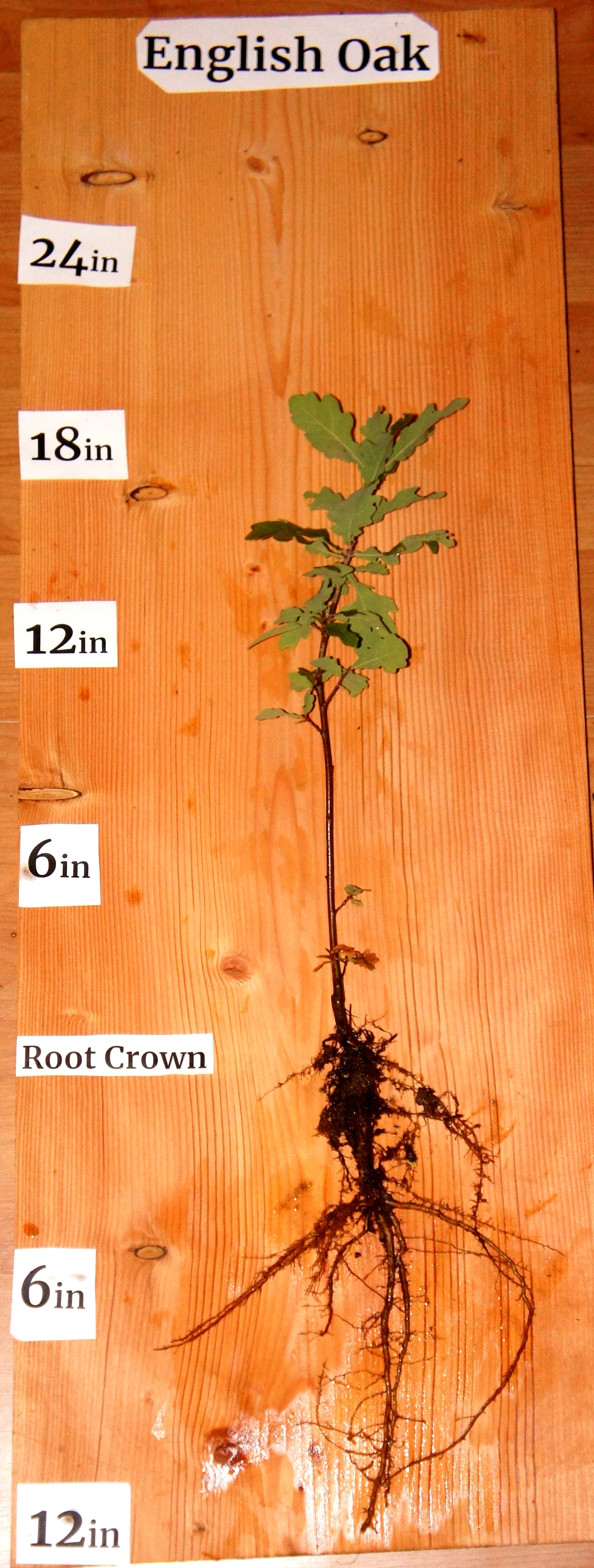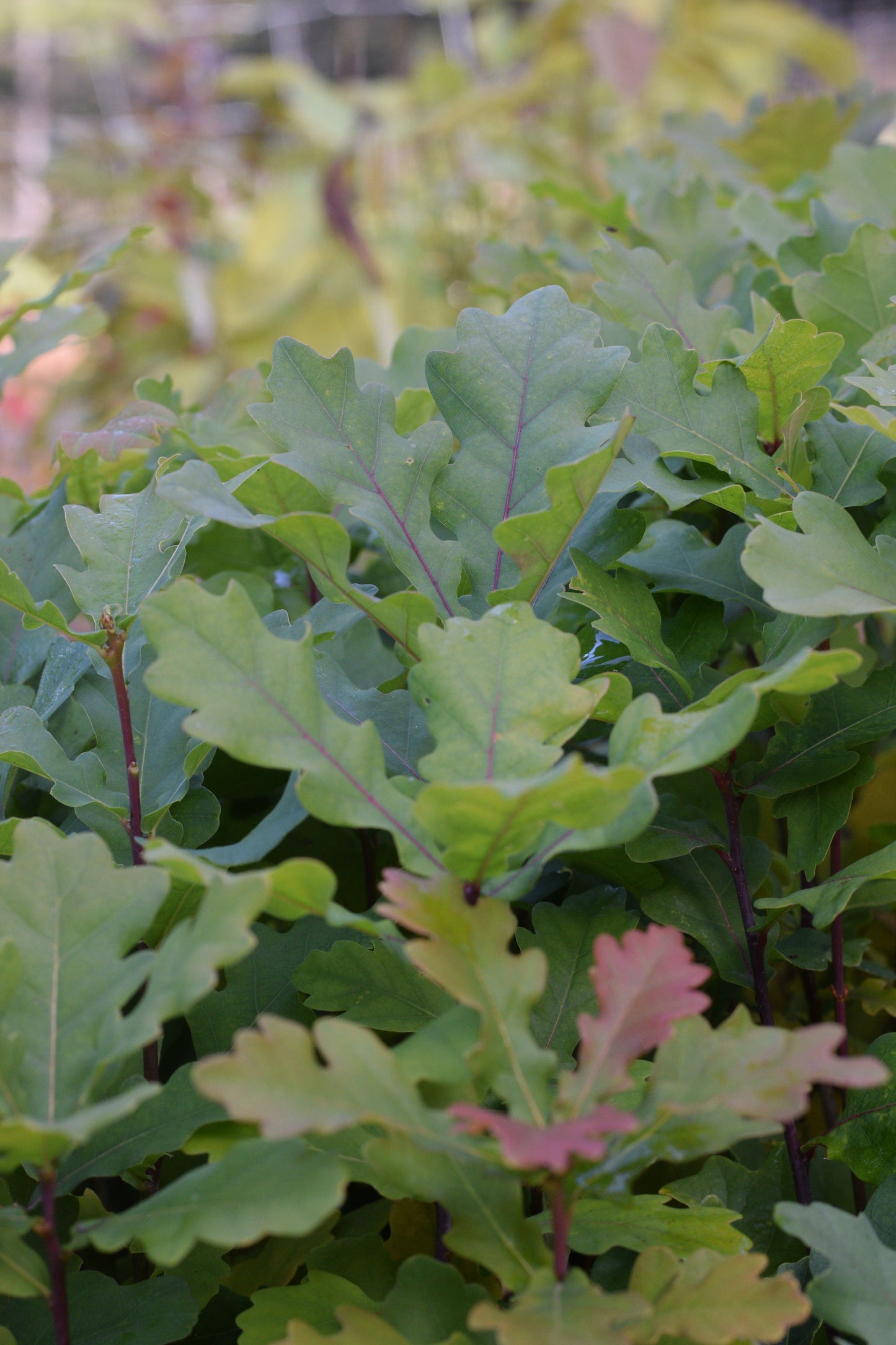English Oak (Quercus robur)
English Oak (Quercus robur)
Local Pickup Available in Harrop, BC
Couldn't load pickup availability
Why We Grow It
Why We Grow It
English Oak is an can be an invaluable tree for food forests and ecological systems due to its longevity, multifunctionality, and ecological significance. Its acorns can be used as a food source, while its wood offers both durable timber and a medium for mushroom cultivation. The tree enhances biodiversity by supporting numerous species, from pollinators to birds and mammals. Its ability to thrive in a variety of soil types and its tolerance for diverse conditions make it a resilient and valuable addition.
How the Plant Grows
How the Plant Grows
English Oak grows upright with a straight trunk and a broad, spreading crown. Its dense canopy provides ample shade, while its deeply lobed green leaves remain attractive through the growing season, turning brown in fall. The tree produces small, clustered flowers in spring, which give way to abundant acorns in autumn. As a long-lived species, it establishes slowly but becomes a towering presence, offering benefits for generations.
Plant Size
Plant Size
Size at Maturity- Reaches 75-100+ feet tall with a broad crown spread of 50-80 feet
Current Size- 1'-3', 1 year old seedlings with a fat tap root
Additional Info
Additional Info
The English Oak has been revered throughout history, not only as a symbol of strength and endurance but also for its practical applications. Its acorns were a significant food source in historical times, prepared by leaching out tannins to make them palatable. The tree’s wood is highly prized for its strength and durability, traditionally used in shipbuilding, fine furniture, and architectural elements. In agroforestry, English Oak wood serves as an excellent substrate for mushroom cultivation, adding another layer of productivity to this already versatile tree. Ecologically, the tree supports a vast array of life, from insects to birds and mammals, making it a keystone species in its habitat.
The English Oak, also known as European Oak, Pedunculate Oak, or Common Oak, is a superstitiously infamous white oak species native to much of Europe and the national tree of England. Renowned for its ecological and cultural importance, this fast-growing tree can reach heights of 75 to over 100 feet and has a lifespan of centuries, with some specimens exceeding 1,000 years. Its abundant acorn crops provide food for wildlife and, with proper preparation, for humans. With durable, highly valued wood and a critical role in ecosystems, the English Oak is a cornerstone tree for permaculture and agroforestry systems.
Share





Plant Highlights
-

Water
Moderate water needs; tolerates occasional dry conditions once established
-

Pollination
Wind-pollinated; monoecious, with both male and female flowers on the same tree.
-

Soil
Thrives in well-drained loamy soils but adapts to sandy or clay soils with a slightly acidic to neutral pH (6.0-7.5)
-

Years to Bear
Produces acorns at around 10-15 years, with peak production as it matures.
-

Hardiness
Zones 4-8, tolerating temperatures as low as -34°C (-30°F)
-

Solar
Prefers full sun but tolerates partial shade during its early years
Subscribe to our emails
Lots of Free Growing Info. Be the first to know about new plants and exclusive discounts.











